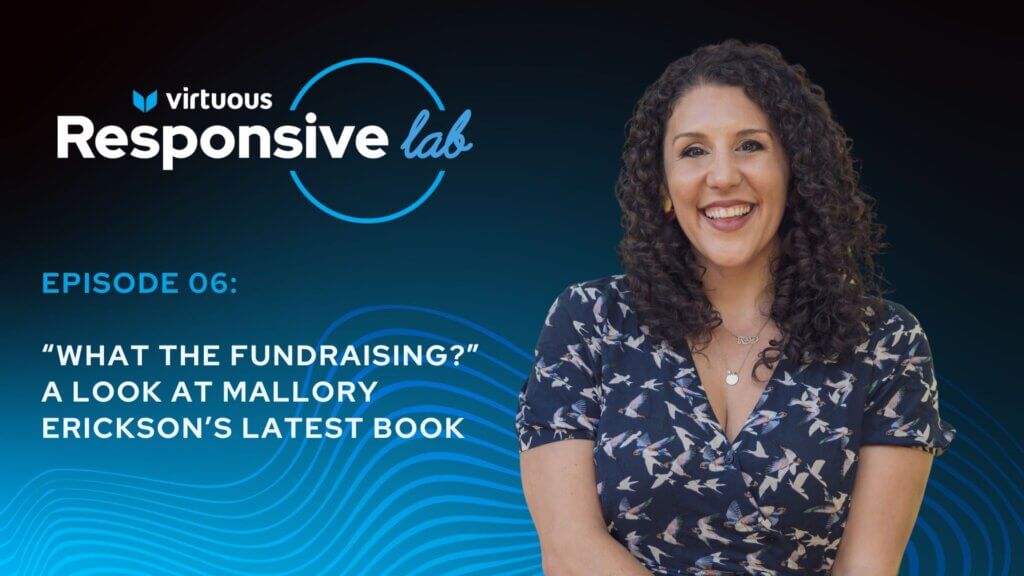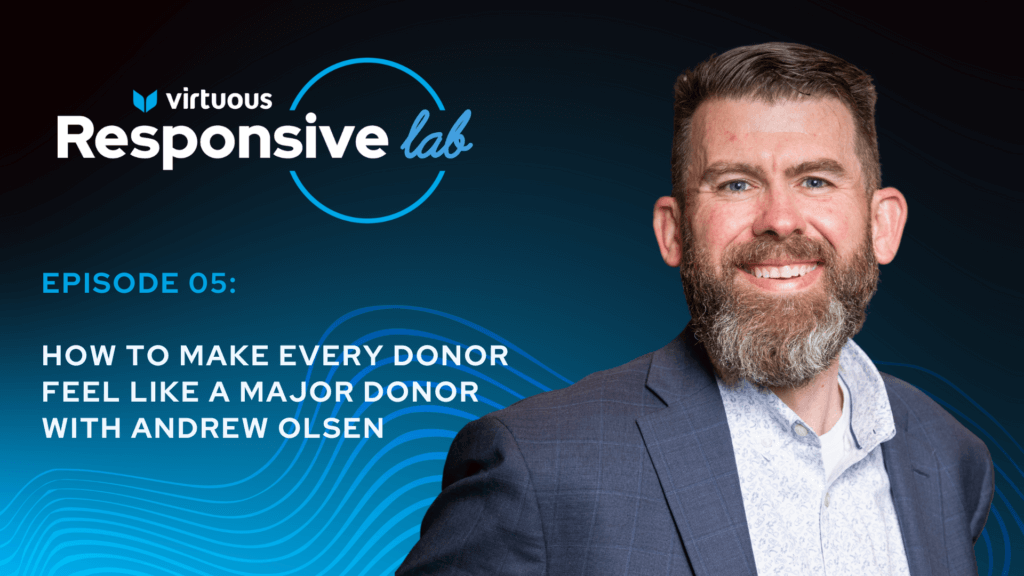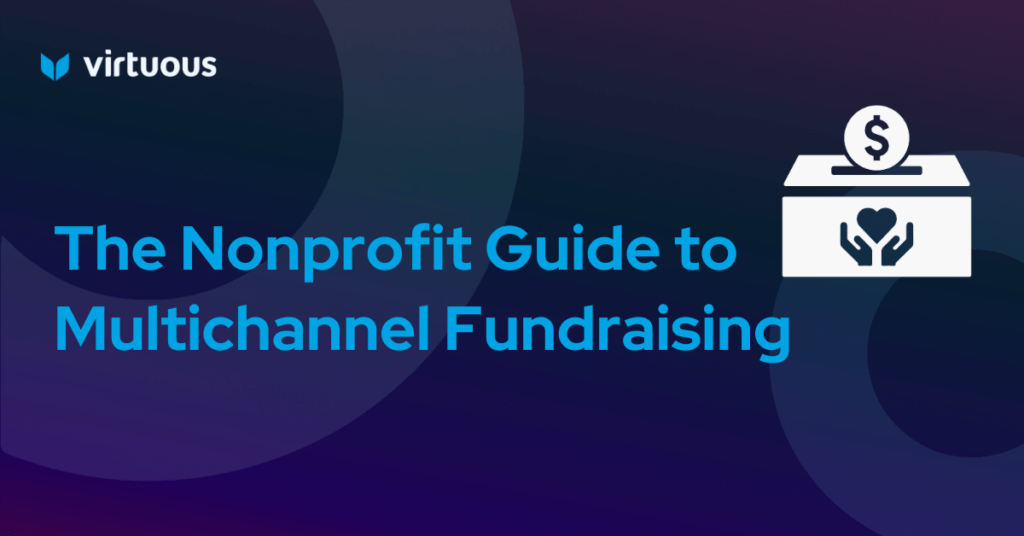Segmentation and personas will help you grow donor lifetime value. Here’s how. Donor lifetime value is an incredibly essential key performance indicator to track. This metric tells you how much a donor is likely to contribute over time. Segmentation creates opportunities for nonprofits to target specific donor groups with personalized communication and appeals. Continue reading to learn more about this segmented approach and get persona templates to use in your next fundraising campaign.
Tracking donor lifetime value is one of the most valuable key performance indicators your nonprofit organization can track. This predictive metric estimates a donor’s total contributions over time. With visibility into donor lifetime value, you can identify high-value donors and optimize fundraising strategies to unlock greater giving.
The simplest measurement for calculating donor lifetime value is by taking a donor’s average annual donation amount and multiplying it by the average number of annual gifts. Then, take that number and multiply it by the average donor lifespan.
Using that equation, let’s use an example of a donor who makes a monthly $20 donation to your nonprofit:
- $20 (average annual donation amount) x 12 (average number of annual gifts) = $240
- $240 (average annual contribution) x 5 (average donor lifespan) = $1,200
This is a prime example of why donor lifetime value is an essential KPI to track. A $20 donation might feel modest, but nurturing ongoing support can yield higher donor lifetime value in the long run.
This is the power of donor retention. By focusing on your donor retention rate and knowing the donor lifetime value, nonprofits can apply responsive fundraising approaches to create personalized and targeted experiences that encourage return giving and participation in the mission.
Grow Donor Lifetime Value: How Segmentation Can Increase Giving
Email remains one of the most effective marketing channels for engaging supporters. However, as inboxes get more crowded, the use of one-size-fits-all emails has become obsolete. Donors are looking for personalized communication that speaks to their needs and preferences.
Any kind of mass communication, like a general fundraising ask sent to your entire donor file, will feel impersonal and won’t ignite that desire for them to engage. Remember, people are spending around 10 seconds skimming through an email. If you can’t deliver that spark, odds are the supporter will abandon the email without a second thought.
Individually addressing every donor on your file isn’t ideal and will likely cause burnout in your staff. This is where donor segmentation makes a difference, enabling you to deliver more timely and relevant content.
Donor Segmentation in Action
By segmenting your donor base into distinct groups based on demographics, giving history, interests, and engagement levels—aka donor personas—you can break through those noisy inboxes and catch the attention of the right people.
This can feel like a daunting undertaking. But with a responsive nonprofit CRM like Virtuous, you have a marketing automation tool that can guide supporters through their very own dynamic donor journeys.
Donor journeys are a sequence of connection points that bring supporters closer to your organization and closer to making a gift. The journey takes them from a starting point and guides them through getting to know your organization. It helps them connect more meaningfully with the cause they already care about.
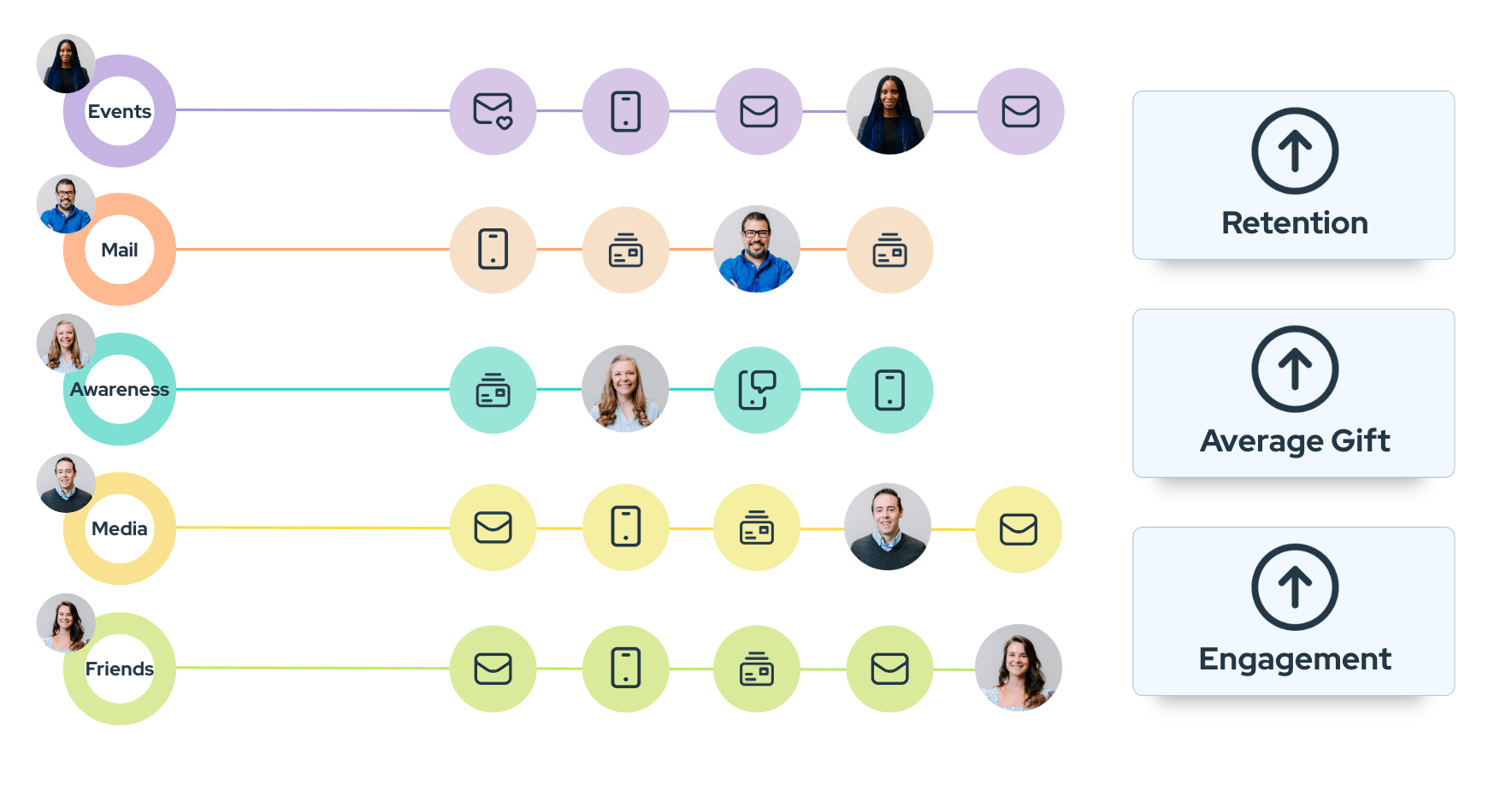
With the help of marketing automation for nonprofits, you can set up emails to be triggered based on these signals. For organizations like Chicanos Por La Causa that have limited staff resources, marketing automation has enabled them to scale back on resources yet deliver highly personalized donor experiences, which have led to increased engagement and greater fundraising outcomes.
“The marketing automation was the number one selling point for us,” says Veronica Carrillo, Donor Relations Manager at Chicanos Por La Causa. “To be able to have responsive email streams that respond to people’s actions and their interests and automate that to give everyone the impression that we have a one-on-one relationship, that’s really been a game changer.”
Email Segmentation in Action
Let’s put this into action. Here’s an example of a mass email:
Dear Friend,
At YouthEd Foundation, we're committed to shaping the future by empowering young minds through education. Your support would be invaluable in helping us provide opportunities and resources to children and adolescents, ensuring they have the tools they need to succeed.
Today, we're reaching out to ask for your support. With your donation, we can continue to make a difference in the lives of young people, providing them with the education and support they deserve.
Every contribution counts, no matter the size. Together, we can create a brighter future for our youth.
Thank you for your unwavering commitment to our cause.
While this email does a great job of explaining YouthEd’s mission, it doesn’t address why the donor should care and how the mission ties into the individual’s passions and motivations. Let’s see how a little bit of segmentation work can improve this email.
Here’s an example we created for a donor persona who recently attended a fundraising event:
Dear Gina,
Thank you for joining us at our recent Run for Education event. It was a pleasure having you with us, and we hope you enjoyed learning more about the work we do at YouthEd Foundation.
As someone who shares our passion for empowering young minds through education, we wanted to reach out and invite you to take the next step in supporting our cause. Your contribution, no matter the size, can make a significant difference in the lives of children and adolescents in our community.
Thank you for considering supporting our cause. We look forward to welcoming you as a valued member of our community.
With personal touches like calling out the donor’s recent event participation and sharing the impact a donation could make on youth in their community, it’s more likely to encourage donors to take the next step.
How Personas Fit Into Responsive Fundraising and Grow Donor Lifetime Value
Donor segmentation and personas are integral parts of the responsive fundraising framework. This approach harnesses modern technology, data intelligence, and donor-centric giving experiences to cultivate personalized interactions with each donor.
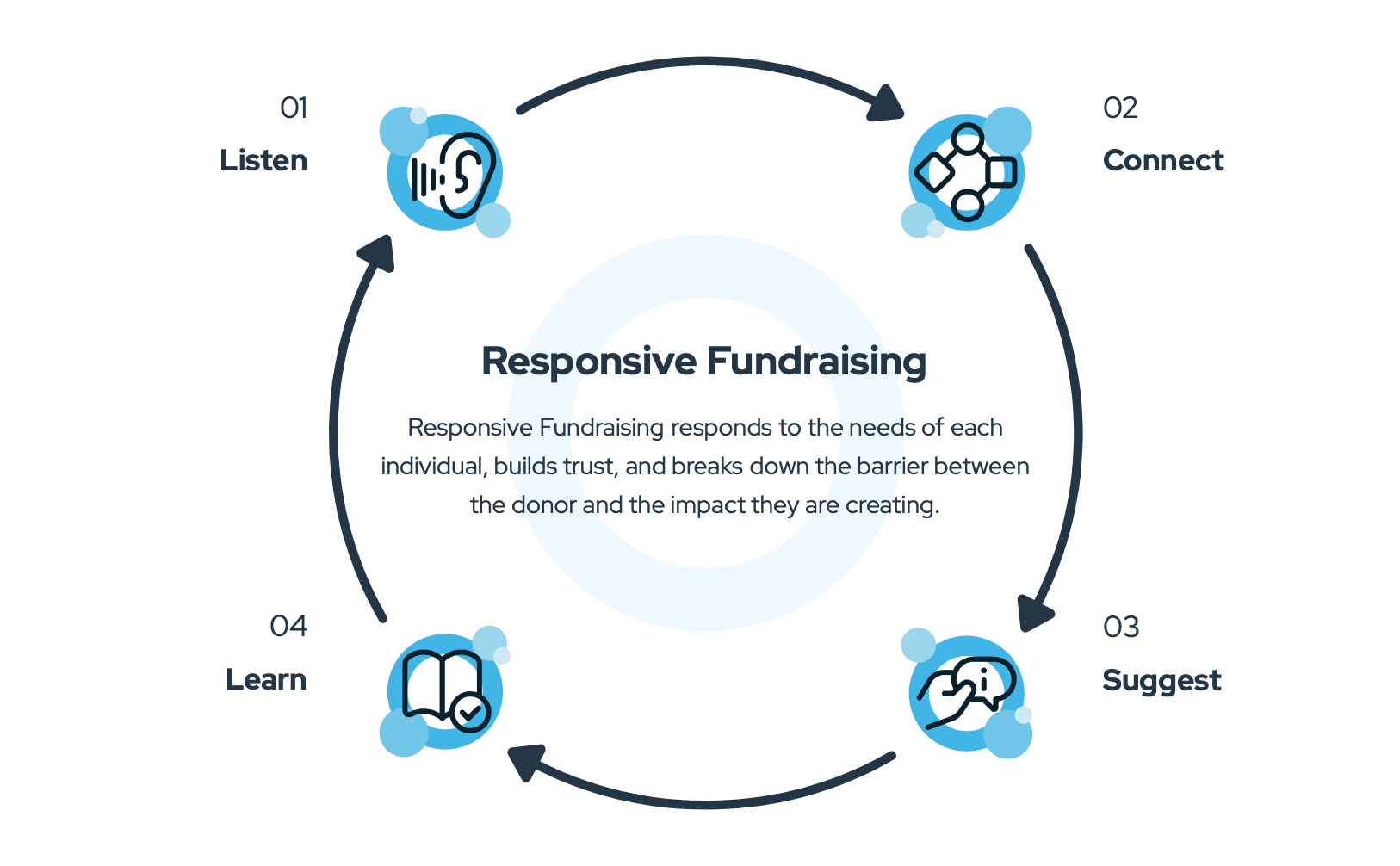
We mentioned earlier that donor personas are a way to categorize donors based on key characteristics. Organizing donors by persona allows nonprofits to enhance traditional giving Recency, Frequency, Monetary segmentation with relevant affinity or behavior-based data signals, like cause interest areas or channel preference.
“RFM can be incredibly valuable and helpful. But what we’re talking about here is understanding who people are as people so that we can communicate with them in a more personal way—not just so that we can optimize the ROI of a particular piece of mail,” Gabe Cooper, CEO of Virtuous, explains in a webinar on the responsive maturity model.
He continues, “Because we know that at the end of the day, our donors deserve and want to be communicated with in a more personal way. They want personal experiences. So, the great first step here is to begin creating personas by affinity, topic, giving, or engagement.”
This responsive approach to fundraising ensures that communication is more relevant and resonant, triggering more moments of activation, whether it’s donating, signing up for a local event, starting a fundraiser, or contributing volunteer time.
4 Persona Templates to Help You Lift Donor Lifetime Value
Creating one-on-one experiences is essential for forging deeper relationships with donors and maximizing donor lifetime value. When supporters feel that their individual needs and preferences are acknowledged and respected in your communications, they develop a stronger affinity for your mission and are more inclined to continue their support over time.
Because your nonprofit CRM software should consolidate all of your donor data across multiple platforms, having marketing automation functionality built right in will help you build out your donor personas and create more personalized communication journeys for each donor segment.
To kickstart your donor personas or refine your existing ones, we’ll explore four fundamental personas:
1. The First-Time Donor
Background: First-Time Freddie is a first-time donor who recently contributed $100 to a year-end campaign. A social media ad shedding light on the challenges posed by Alzheimer’s disease, a cause that hits close to home, influenced his decision to donate..
Motivations: Freddie currently cares for his mom who was diagnosed with Alzheimer’s in 2021. His firsthand experience has cultivated a deep well of compassion and empathy toward individuals grappling with Alzheimer’s and their dedicated caretakers.
Interests: Freddie is deeply engaged in promoting health, wellness, and charitable causes he holds close to his heart, such as Alzheimer’s awareness. He prefers donating online and values a quick donation process. However, his involvement extends beyond online advocacy to real-world action, as he participates avidly in nonprofit walks and runs.
Communication preferences: Freddie is particularly receptive to emotionally compelling stories and visuals that showcase the real-world impact of charitable contributions. He appreciates staying informed about the progress and outcomes resulting from his contributions. With a preference for Facebook and Instagram, Freddie engages actively with content that resonates with his values and personal experiences.
Engagement opportunities: Freddie would be open to exclusive invitations to both virtual and in-person events, especially if the organization offers caregiving resources and community support opportunities. Additionally, exclusive access to behind-the-scenes content or personal stories from individuals directly impacted by Alzheimer’s disease would encourage Freddie to be a recurring giver.
2. The Monthly Supporter
Background: Monthly Maggie leads a busy life balancing her career, family commitments, and personal interests. She is financially stable, has a deep compassion for animals, and wants to make a difference in the local community.
Motivations: Maggie’s bond with your animal shelter runs deep, as she welcomed her cherished Pomeranian, Mitzy, into her family through your organization. Her monthly donation of $50 is driven by a desire to safeguard the well-being of animals like Mitzy. She believes in the power of consistent support and wants to contribute to organizations she trusts.
Interests: Maggie is passionate about various social and environmental issues, including animal welfare. education, healthcare access, and environmental conservation. She seeks out organizations that address these issues comprehensively and have a track record of making tangible differences in their communities.
Communication preferences: As a busy professional, Maggie prefers concise and informative communication that respects her time. She prefers to receive regular updates on the impact of her donations through email newsletters or brief, informative texts. Maggie values transparency and enjoys hearing personal stories or testimonials that highlight the impact of her contributions.
Engagement opportunities: Maggie is open to opportunities that allow her to deepen her involvement with the organizations she supports. She may be interested in attending virtual events, webinars, or volunteer activities that align with her interests and schedule. Providing opportunities for Maggie to connect with like-minded individuals and contribute her skills or expertise can further encourage her to increase her monthly donation amount.
3. The Event Participant
Background: Running Ryan is a fitness enthusiast who thrives on the adrenaline rush of participating in marathons and charity runs. Despite his active involvement in running events hosted by your water charity, he hasn’t yet made a financial contribution.
Motivations: Ryan finds joy and fulfillment in participating in running events, using the opportunity to challenge himself physically. He values community engagement and enjoys being part of events that bring people together for a common purpose.
Interests: As a passionate runner, Ryan has a deep interest in fitness, health, and wellness-related topics. He also gravitates toward charitable causes that align with his values and interests, like environmental conservation, global health, and humanitarian efforts for water access.
Communication preferences: Ryan prefers communication channels that offer convenience and accessibility, especially email, text, and Instagram. He appreciates learning about upcoming running events and opportunities to engage with his running community.
Engagement opportunities: To encourage Ryan to transition from event participant to donor, you can offer personalized outreach, highlighting the importance of financial support in sustaining their mission of providing clean water access to communities in need. Providing incentives such as exclusive access to training tips, race-day perks, or recognition for top fundraisers may further motivate Ryan to make a donation. Hosting virtual or in-person meetups with fellow runners and sharing success stories of how donations have transformed lives through access to clean water can also inspire Ryan to contribute financially.
4. The Advocate
Background: Ava the Advocate is a socially active Gen Z individual with a strong desire to make a difference in her community. She has shown initiative by starting peer-to-peer fundraisers for your local food bank, reflecting her commitment to addressing food insecurity issues. Despite raising more than $2,000 through advocacy efforts, Ava, herself, has only contributed $100 to the cause.
Motivations: Ava is driven by a genuine desire to help others and believes in the power of collective action to address social issues. She is passionate about tackling food insecurity and sees peer-to-peer fundraising as a means to rally support and raise awareness within her social circles.
Interests: Ava is digitally savvy and active on TikTok. She takes an interest in social justice issues, engages in community organizing, and supports grassroots movements that aim to create positive change. Ava holds a particular passion for addressing food insecurity and gravitates toward initiatives offering practical solutions to meet the basic needs of vulnerable populations.
Communication preferences: Ava prefers communication channels that align with her digital lifestyle, such as texting and TikTok. She is more likely to respond to personalized messages that resonate with her values and inspire her to take meaningful action.
Engagement opportunities: Ava’s enthusiastic participation in fundraising for the food bank presents a prime opportunity to further engage her as a monthly supporter and volunteer. By initiating conversations with Ava about volunteer opportunities, she can directly observe the direct impact of her contributions to the community. Moreover, sharing insights into the benefits of monthly giving and how sustained support can effectively address ongoing food insecurity challenges can motivate Ava to transition into a regular donor.
Next step: Next step: Build Dynamic Campaigns
To help you become a more responsive nonprofit, we’ve adopted a maturity model framework, a step-by-step guide often used by organizations to benchmark their current level of maturity against industry best practices.
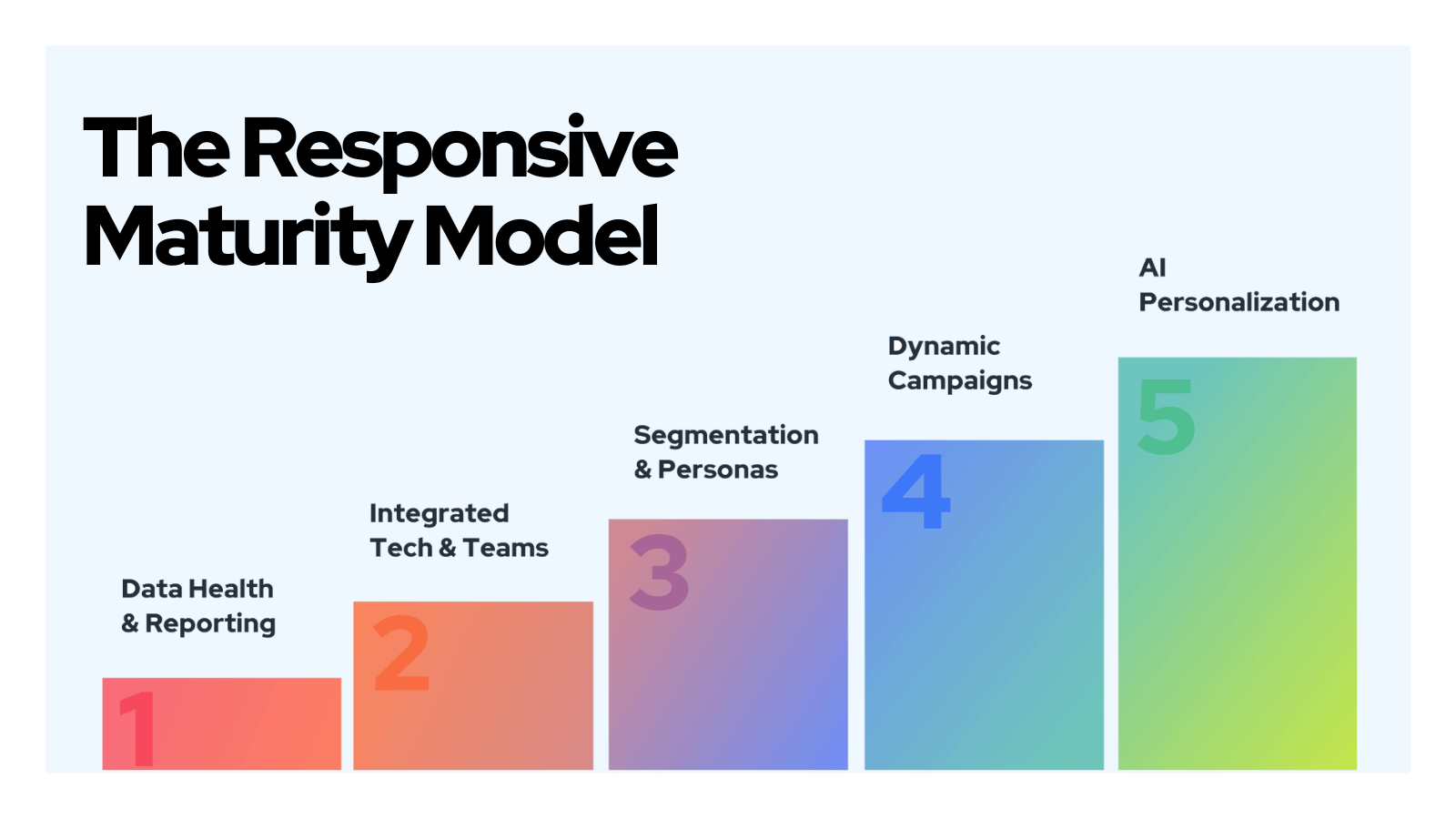
As you progress across each step, you’ll see increased team effectiveness, increased donor retention and gift size, decreased staff burnout, improved advocacy, and improved donor acquisition metrics.
To learn the five building blocks to responsive fundraising, download The Responsive Maturity Model: 5 Building Blocks to Drive Increased Generosity.

